
This post may contain links from our sponsors and affiliates, and Flywheel Publishing may receive
compensation for actions taken through them.
Every year, tens of millions of Americans change residences — some 3.2% move to a new county, and 2.3% move to a new state. Young college- and career-bound people tend to move more, and millennials are almost twice as likely to move counties as the average American.
Young people tend to move for a variety of reasons, including work, school, or to be closer to friends and family. In some parts of the country, young people are arriving at rates more than five times greater than the national average.
To determine the 40 places where young people are moving to, 24/7 Wall St. reviewed millennial migration to U.S. counties using data from the U.S. Census Bureau’s American Community Survey. We ranked the counties based on the number of 25 to 34-year-olds who moved there from a different county in 2016 as a share of the total county population.
Click here to see the full list of places where young people are moving.
Click here to see our detailed findings and methodology.

40. Elmore County, Idaho
> Commuting zone: Mountain Home, ID
> Young adults who arrived last year: 3.3% of population
> Median age: 31.5 years (6.7 less than U.S.)
> Adults with at least a bachelor’s degree: 16.6%
> Unemployment rate: 3.2%
[in-text-ad]

39. Logan County, Illinois
> Commuting zone: Lincoln, IL
> Young adults who arrived last year: 3.3% of population
> Median age: 40.4 years (2.2 more than U.S.)
> Adults with at least a bachelor’s degree: 18.4%
> Unemployment rate: 4.8%

38. Butts County, Georgia
> Commuting zone: Atlanta-Sandy Springs-Roswell, GA
> Young adults who arrived last year: 3.3% of population
> Median age: 38.8 years (0.6 more than U.S.)
> Adults with at least a bachelor’s degree: 10.2%
> Unemployment rate: 4.3%

37. San Francisco County, California
> Commuting zone: San Francisco-Oakland-Hayward, CA
> Young adults who arrived last year: 3.3% of population
> Median age: 38.7 years (0.5 more than U.S.)
> Adults with at least a bachelor’s degree: 54.8%
> Unemployment rate: 2.6%
[in-text-ad-2]

36. Williams County, North Dakota
> Commuting zone: Williston, ND
> Young adults who arrived last year: 3.3% of population
> Median age: 32.3 years (5.9 less than U.S.)
> Adults with at least a bachelor’s degree: 22.5%
> Unemployment rate: 2.3%

35. Durham County, North Carolina
> Commuting zone: Durham-Chapel Hill, NC
> Young adults who arrived last year: 3.4% of population
> Median age: 35.1 years (3.1 less than U.S.)
> Adults with at least a bachelor’s degree: 46.9%
> Unemployment rate: 3.8%
[in-text-ad]

34. Comanche County, Oklahoma
> Commuting zone: Lawton, OK
> Young adults who arrived last year: 3.4% of population
> Median age: 32.6 years (5.6 less than U.S.)
> Adults with at least a bachelor’s degree: 20.7%
> Unemployment rate: 4.5%

33. Suffolk County, Massachusetts
> Commuting zone: Boston-Cambridge-Newton, MA-NH
> Young adults who arrived last year: 3.4% of population
> Median age: 32.6 years (5.6 less than U.S.)
> Adults with at least a bachelor’s degree: 42.7%
> Unemployment rate: 3.8%

32. Greene County, North Carolina
> Commuting zone: N/A
> Young adults who arrived last year: 3.4% of population
> Median age: 40.2 years (2.0 more than U.S.)
> Adults with at least a bachelor’s degree: 9.2%
> Unemployment rate: 4.3%
[in-text-ad-2]

31. Fredericksburg, Virginia
> Commuting zone: Washington-Arlington-Alexandria, DC-VA-MD-WV
> Young adults who arrived last year: 3.4% of population
> Median age: 30.1 years (8.1 less than U.S.)
> Adults with at least a bachelor’s degree: 42.3%
> Unemployment rate: 3.7%

30. Onslow County, North Carolina
> Commuting zone: Jacksonville, NC
> Young adults who arrived last year: 3.4% of population
> Median age: 26.8 years (11.4 less than U.S.)
> Adults with at least a bachelor’s degree: 19.5%
> Unemployment rate: 4.6%
[in-text-ad]

29. Bradford County, Florida
> Commuting zone: N/A
> Young adults who arrived last year: 3.4% of population
> Median age: 41.4 years (3.2 more than U.S.)
> Adults with at least a bachelor’s degree: 11.8%
> Unemployment rate: 3.6%

28. Dale County, Alabama
> Commuting zone: Ozark, AL
> Young adults who arrived last year: 3.4% of population
> Median age: 37.3 years (0.9 less than U.S.)
> Adults with at least a bachelor’s degree: 16.1%
> Unemployment rate: 5.2%

27. Liberty County, Texas
> Commuting zone: Houston-The Woodlands-Sugar Land, TX
> Young adults who arrived last year: 3.5% of population
> Median age: 36.7 years (1.5 less than U.S.)
> Adults with at least a bachelor’s degree: 10.0%
> Unemployment rate: 6.3%
[in-text-ad-2]

26. Christian County, Kentucky
> Commuting zone: Clarksville, TN-KY
> Young adults who arrived last year: 3.5% of population
> Median age: 28.8 years (9.4 less than U.S.)
> Adults with at least a bachelor’s degree: 16.7%
> Unemployment rate: 6.5%
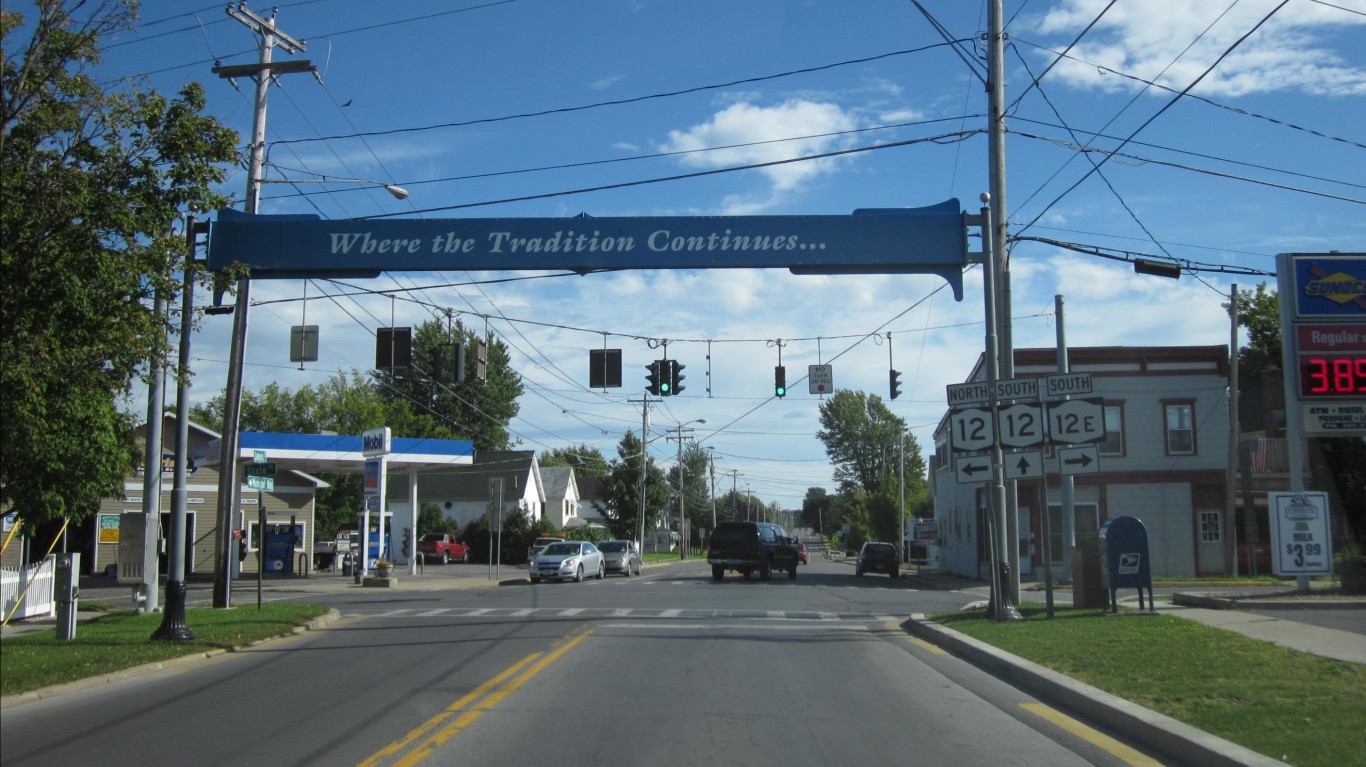
25. Jefferson County, New York
> Commuting zone: Watertown-Fort Drum, NY
> Young adults who arrived last year: 3.5% of population
> Median age: 32.6 years (5.6 less than U.S.)
> Adults with at least a bachelor’s degree: 20.8%
> Unemployment rate: 4.8%
[in-text-ad]
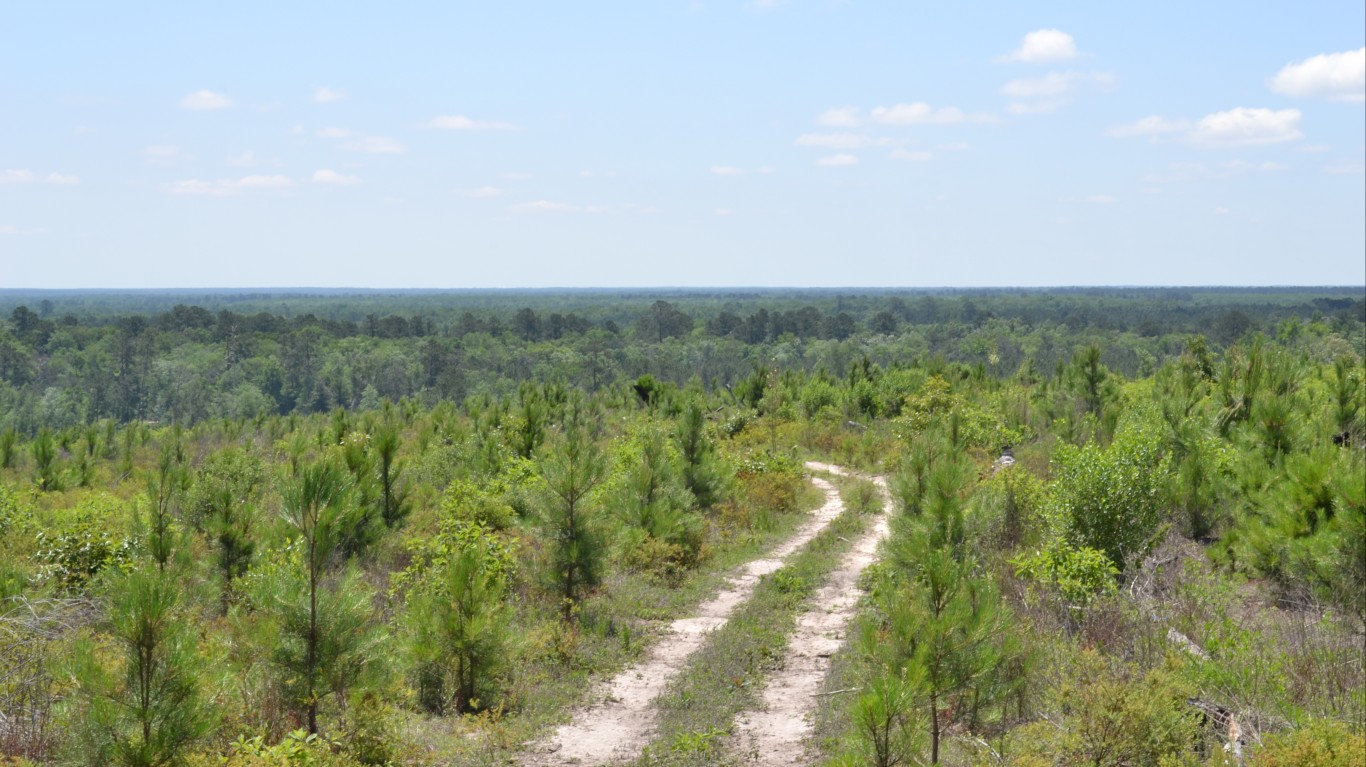
24. Vernon Parish, Louisiana
> Commuting zone: Fort Polk South, LA
> Young adults who arrived last year: 3.5% of population
> Median age: 30.6 years (7.6 less than U.S.)
> Adults with at least a bachelor’s degree: 17.8%
> Unemployment rate: 8.5%

23. Richmond, Virginia
> Commuting zone: Richmond, VA
> Young adults who arrived last year: 3.5% of population
> Median age: 33.6 years (4.6 less than U.S.)
> Adults with at least a bachelor’s degree: 36.7%
> Unemployment rate: 3.8%

22. Norfolk, Virginia
> Commuting zone: Virginia Beach-Norfolk-Newport News, VA-NC
> Young adults who arrived last year: 3.6% of population
> Median age: 30.7 years (7.5 less than U.S.)
> Adults with at least a bachelor’s degree: 26.6%
> Unemployment rate: 3.9%
[in-text-ad-2]

21. Logan County, Colorado
> Commuting zone: Sterling, CO
> Young adults who arrived last year: 3.7% of population
> Median age: 37.5 years (0.7 less than U.S.)
> Adults with at least a bachelor’s degree: 16.7%
> Unemployment rate: 2.9%

20. Morgan County, Tennessee
> Commuting zone: Knoxville, TN
> Young adults who arrived last year: 3.7% of population
> Median age: 41.4 years (3.2 more than U.S.)
> Adults with at least a bachelor’s degree: 7.5%
> Unemployment rate: 5.4%
[in-text-ad]

19. Riley County, Kansas
> Commuting zone: Manhattan, KS
> Young adults who arrived last year: 3.7% of population
> Median age: 25.2 years (13.0 less than U.S.)
> Adults with at least a bachelor’s degree: 46.0%
> Unemployment rate: 3.4%

18. Rusk County, Texas
> Commuting zone: Longview, TX
> Young adults who arrived last year: 3.9% of population
> Median age: 38.9 years (0.7 more than U.S.)
> Adults with at least a bachelor’s degree: 14.7%
> Unemployment rate: 4.6%

17. Fairfax, Virginia
> Commuting zone: Washington-Arlington-Alexandria, DC-VA-MD-WV
> Young adults who arrived last year: 3.9% of population
> Median age: 40.1 years (1.9 more than U.S.)
> Adults with at least a bachelor’s degree: 54.7%
> Unemployment rate: 2.6%
[in-text-ad-2]
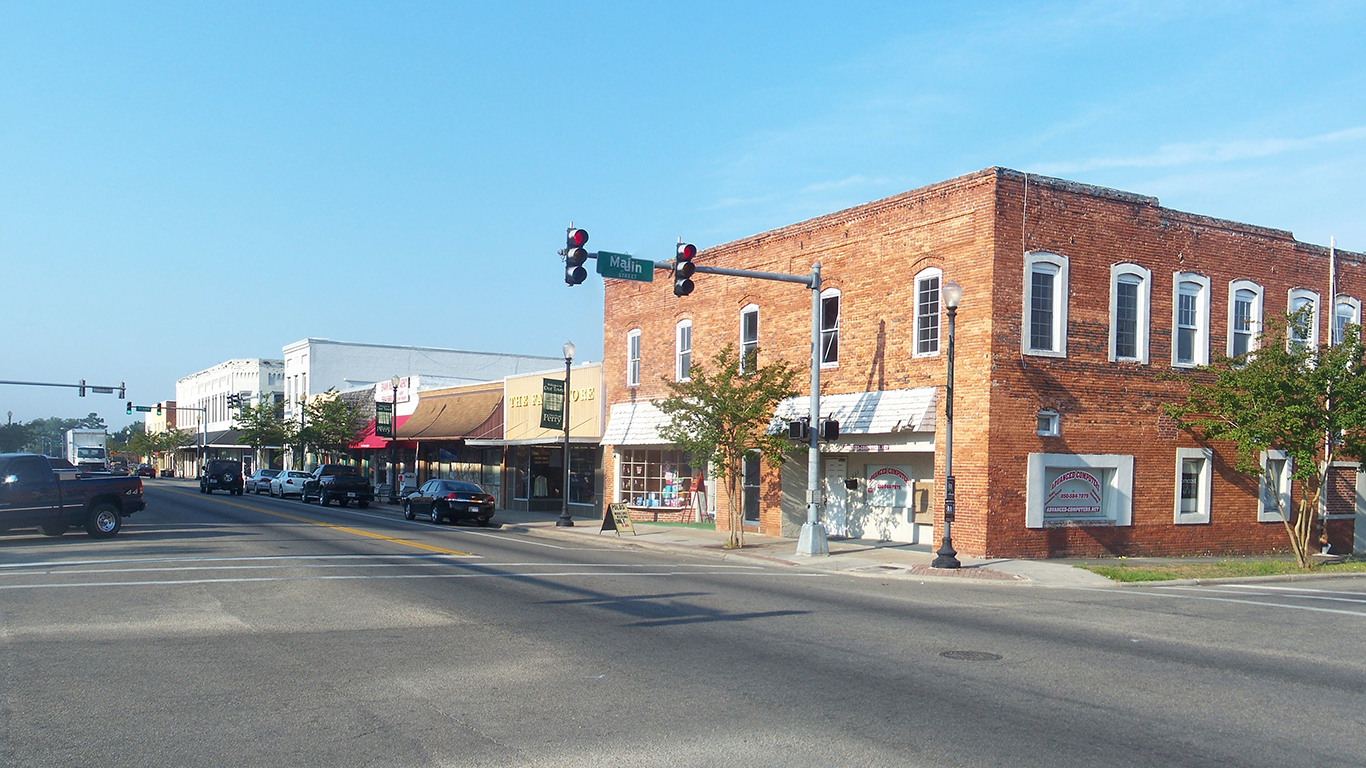
16. Taylor County, Florida
> Commuting zone: N/A
> Young adults who arrived last year: 4.0% of population
> Median age: 41.8 years (3.6 more than U.S.)
> Adults with at least a bachelor’s degree: 9.8%
> Unemployment rate: 4.4%

15. Prince George County, Virginia
> Commuting zone: Richmond, VA
> Young adults who arrived last year: 4.0% of population
> Median age: 37.3 years (0.9 less than U.S.)
> Adults with at least a bachelor’s degree: 22.1%
> Unemployment rate: 3.9%
[in-text-ad]

14. Lamar County, Mississippi
> Commuting zone: Hattiesburg, MS
> Young adults who arrived last year: 4.2% of population
> Median age: 34.7 years (3.5 less than U.S.)
> Adults with at least a bachelor’s degree: 36.8%
> Unemployment rate: 4.4%
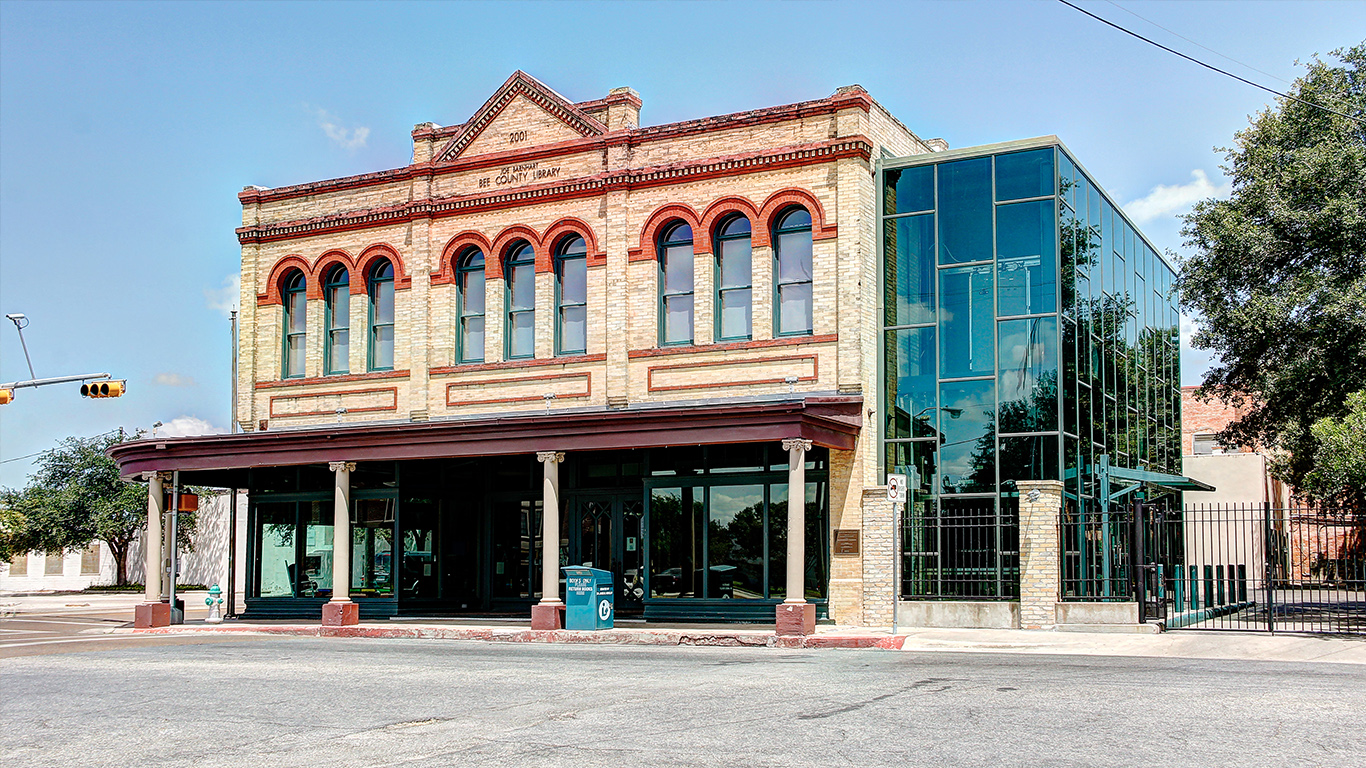
13. Bee County, Texas
> Commuting zone: Beeville, TX
> Young adults who arrived last year: 4.3% of population
> Median age: 36.3 years (1.9 less than U.S.)
> Adults with at least a bachelor’s degree: 8.9%
> Unemployment rate: 5.6%

12. Denver County, Colorado
> Commuting zone: Denver-Aurora-Lakewood, CO
> Young adults who arrived last year: 4.3% of population
> Median age: 34.6 years (3.6 less than U.S.)
> Adults with at least a bachelor’s degree: 45.7%
> Unemployment rate: 2.9%
[in-text-ad-2]

11. Tattnall County, Georgia
> Commuting zone: N/A
> Young adults who arrived last year: 4.3% of population
> Median age: 36.9 years (1.3 less than U.S.)
> Adults with at least a bachelor’s degree: 11.4%
> Unemployment rate: 4.4%

10. Coryell County, Texas
> Commuting zone: Killeen-Temple, TX
> Young adults who arrived last year: 4.3% of population
> Median age: 31.4 years (6.8 less than U.S.)
> Adults with at least a bachelor’s degree: 15.1%
> Unemployment rate: 4.5%
[in-text-ad]

9. Hoke County, North Carolina
> Commuting zone: Fayetteville, NC
> Young adults who arrived last year: 4.5% of population
> Median age: 32.2 years (6.0 less than U.S.)
> Adults with at least a bachelor’s degree: 17.8%
> Unemployment rate: 5.3%

8. Liberty County, Georgia
> Commuting zone: Hinesville, GA
> Young adults who arrived last year: 4.6% of population
> Median age: 27.9 years (10.3 less than U.S.)
> Adults with at least a bachelor’s degree: 18.9%
> Unemployment rate: 4.5%
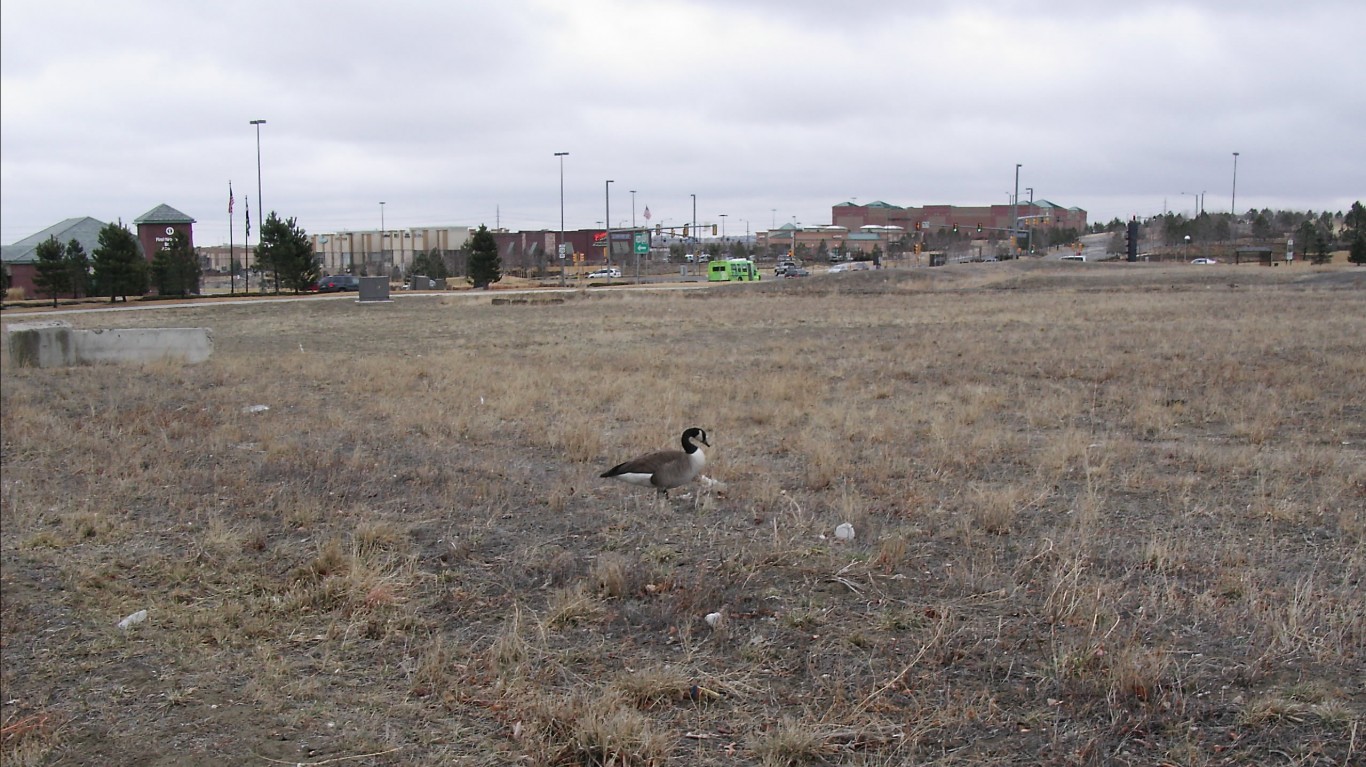
7. Broomfield County, Colorado
> Commuting zone: Denver-Aurora-Lakewood, CO
> Young adults who arrived last year: 4.9% of population
> Median age: 37.9 years (0.3 less than U.S.)
> Adults with at least a bachelor’s degree: 52.5%
> Unemployment rate: 2.7%
[in-text-ad-2]

6. Charlottesville, Virginia
> Commuting zone: Charlottesville, VA
> Young adults who arrived last year: 5.4% of population
> Median age: 30.6 years (7.6 less than U.S.)
> Adults with at least a bachelor’s degree: 50.0%
> Unemployment rate: 3.0%

5. Arlington County, Virginia
> Commuting zone: Washington-Arlington-Alexandria, DC-VA-MD-WV
> Young adults who arrived last year: 6.0% of population
> Median age: 34.4 years (3.8 less than U.S.)
> Adults with at least a bachelor’s degree: 73.7%
> Unemployment rate: 2.2%
[in-text-ad]

4. Lassen County, California
> Commuting zone: Susanville, CA
> Young adults who arrived last year: 6.2% of population
> Median age: 36.9 years (1.3 less than U.S.)
> Adults with at least a bachelor’s degree: 12.5%
> Unemployment rate: 4.8%

3. Geary County, Kansas
> Commuting zone: Junction City, KS
> Young adults who arrived last year: 6.3% of population
> Median age: 26.8 years (11.4 less than U.S.)
> Adults with at least a bachelor’s degree: 20.4%
> Unemployment rate: 5.9%

2. Alexandria, Virginia
> Commuting zone: Washington-Arlington-Alexandria, DC-VA-MD-WV
> Young adults who arrived last year: 6.4% of population
> Median age: 36.7 years (1.5 less than U.S.)
> Adults with at least a bachelor’s degree: 62.1%
> Unemployment rate: 2.4%
[in-text-ad-2]
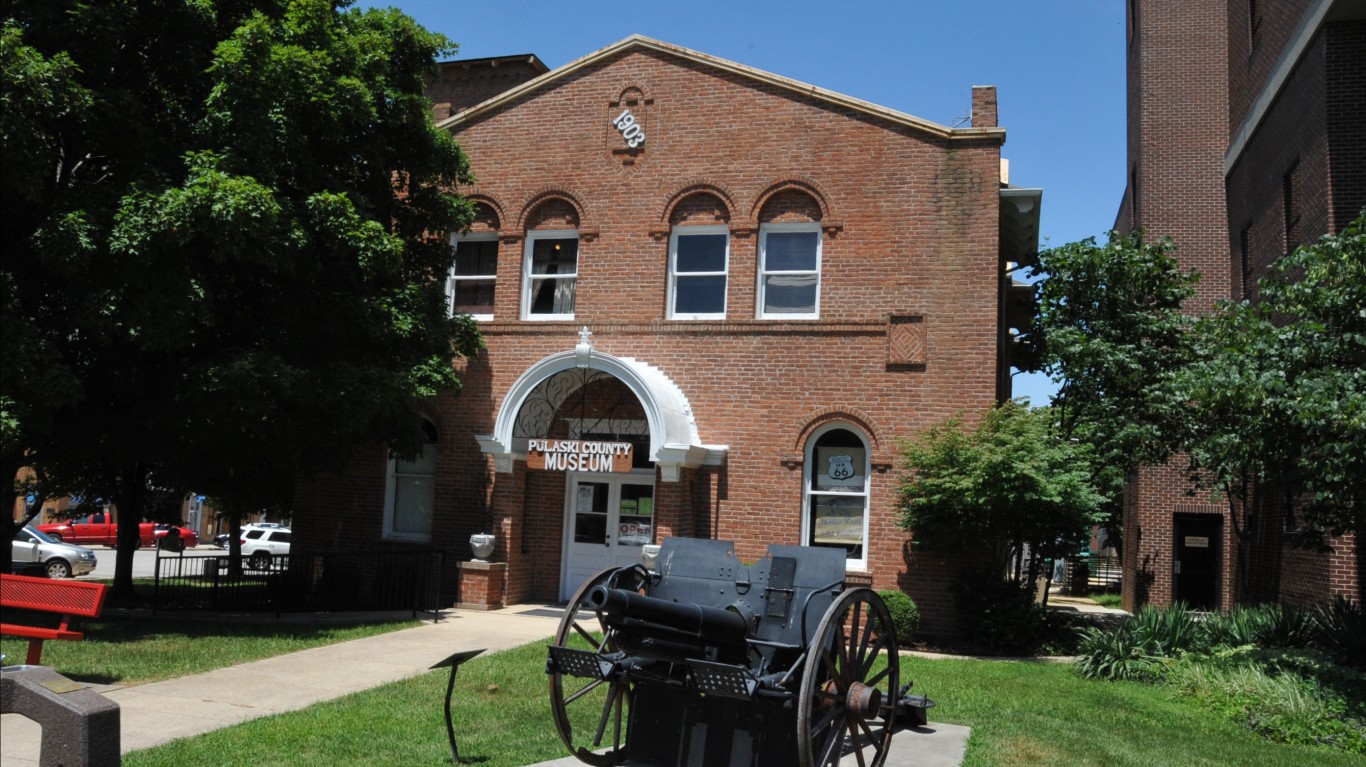
1. Pulaski County, Missouri
> Commuting zone: Fort Leonard Wood, MO
> Young adults who arrived last year: 7.8% of population
> Median age: 27.2 years (11.0 less than U.S.)
> Adults with at least a bachelor’s degree: 23.9%
> Unemployment rate: 4.2%
One of the primary pull factors for Americans moving from one place to another is the presence of friends and family. Young people are more likely to move where there are other young people, which contributes to large disparities in age throughout the country. In 31 of the 40 counties where young people are moving the most, the typical resident is younger than the national median age of 38.2 years. In several cities, the median age is more than 10 years lower than the national median.
Americans with a college education also are more likely to move to a new county than individuals with less education. While 37.3% of adults 25 years and over who moved counties in 2016 had at least a bachelor’s degree, 11.5% had less than a high school diploma.
Education is also a major reason people move, and college towns tend to attract young residents for both school and other opportunities. In 20 of the 40 counties where young people are moving, the share of residents enrolled in an undergraduate or graduate program is greater than the 7.4% national figure.
The primary reason people move is for work. Many young people move for jobs in service-providing industries, while cities with large manufacturing sectors tend to have declining employment and negative population growth. Many of the cities young people are moving to have major information, financial services, and professional and business services industries. Arlington County, Virginia, No. 5 on this list, has the sixth largest professional and business services sector by employment of any county. Broomfield County, Colorado, No. 7 on this list, has the fourth largest information sector.
Young people also tend to move to more urban areas. Of the 40 counties on this list, 36 are located in commuting zones classified as metropolitan and micropolitan statistical areas by the U.S. Office of Management and Budget — designations meant to approximate urban areas that attract economic activity.
Methodology:
To determine the 40 places where young people are moving, 24/7 Wall St. ranked all U.S. counties based on the number of 25 to 34 year-olds who moved to the area from a different county in 2016 as a share of the total county population using data from the U.S. Census Bureau’s American Community Survey. Only counties with populations of at least 20,000 were considered. Data on age and educational attainment also came from the Census. Data on unemployment came from the Bureau of Labor Statistics and is seasonally adjusted for June 2018. Commuting zones are defined by the U.S. Office of Management and Budget.
Cash Back Credit Cards Have Never Been This Good
Credit card companies are at war, handing out free rewards and benefits to win the best customers. A good cash back card can be worth thousands of dollars a year in free money, not to mention other perks like travel, insurance, and access to fancy lounges. See our top picks for the best credit cards today. You won’t want to miss some of these offers.
Flywheel Publishing has partnered with CardRatings for our coverage of credit card products. Flywheel Publishing and CardRatings may receive a commission from card issuers.
Thank you for reading! Have some feedback for us?
Contact the 24/7 Wall St. editorial team.
 24/7 Wall St.
24/7 Wall St. 24/7 Wall St.
24/7 Wall St.


